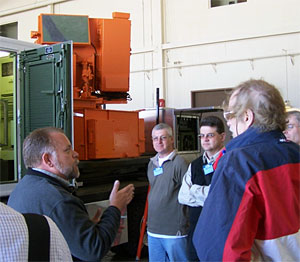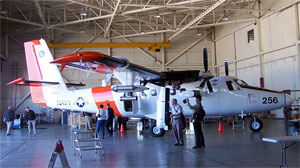
In March, ARM scientists visited the Center for Interdisciplinary Remotely Piloted Aircraft Studies (CIRPAS) for a first-hand look at the state-of-the-art scanning radar that will be deployed as part of the Cloud Land Surface Interaction Campaign (CLASIC) at the ARM Southern Great Plains site. Compared to typical single-pointing radars, the phased-array radar reduces the volume scan time from minutes to seconds. This provides a unique mapping of precipitation to study the 3D structure of shallow and deep precipitation, and their effect on cloud evolution. Originally developed for battlefield air defense for the U.S. Navy, it was modified for CIRPAS to provide as a resource for the scientific community. Valued at approximately $4.5 million, the mobile radar array is being provided at no cost by CIRPAS, a research center at the Naval Postgraduate School in Monterey, California.

During the CIRPAS visit, staff scientists also showed the Twin Otter aircraft they are providing for use during CLASIC. The Twin Otter comes with an instrument suite consisting of meteorological, aerosol, cloud, precipitation, radiation, and chemical sensors. It will be joining five other aircraft—an ER-2, a Cessna 206, a Jetstream-31, another Twin Otter, and a helicopter—obtaining in situ measurements at various altitudes during the 3-week field campaign.
In preparation for the campaign, scheduled to begin on June 9, the CLASIC aircraft team will meet at the Ponca City (Oklahoma) airport in mid-May to conduct simulations of daily forecasting and mission planning scenarios. Closer to the start date, various participants will begin installing supplemental ground instrumentation—such as the radar array and additional flux towers—throughout the ARM Southern Great Plains site. This multidisciplinary ARM campaign is being closely coordinated with the Cumulus Humilis Aerosol Processing Study, sponsored by the DOE Atmospheric Science Program, and the Mid-Continent Intensive Field Campaign, sponsored by the North American Carbon Program.

